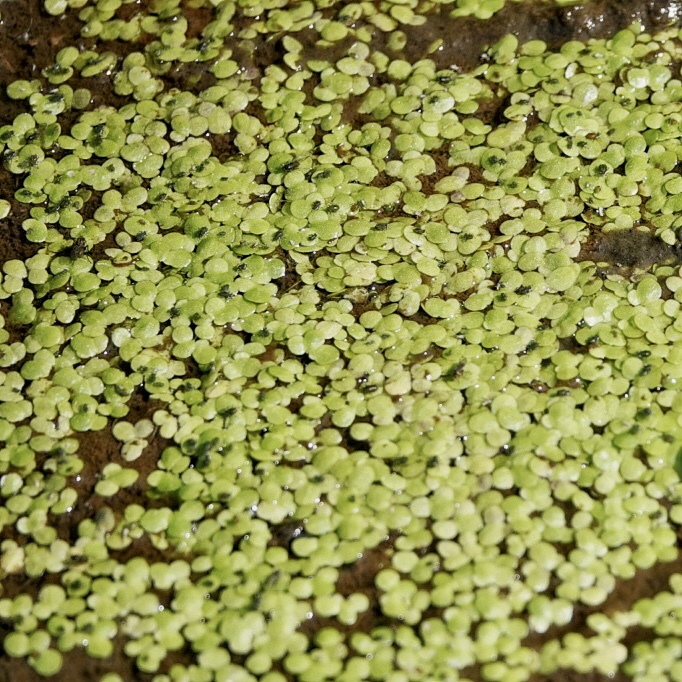
For hundreds of years these tiny aquatic plants were considered to form part of the family Lemnaceae. But morphological similarities between the flowers (though Lemna spp. seldom flower), combined with recent genetic research, led to the Lemnoideae being classified as a subfamily in the family Araceae (arums).
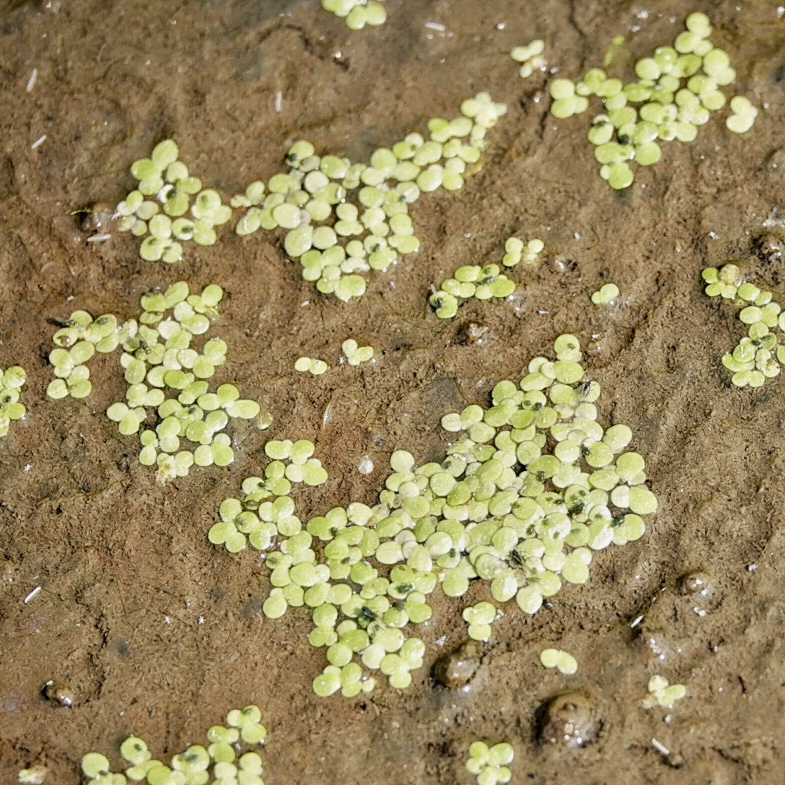
Because it is fast growing (under very good conditions a patch can double in bulk in 48 hours) Lemna minor is often used for bioremediation in areas with excessive nutrient runoff from agricultural operations. It has the added benefit of then being useful as livestock feed and for fertilizer, and is beginning to be commonly raised for just those purposes. This rapid growth does have a downside though, for it quickly becomes an invasive species when introduced to new areas, and can be problematic in those situations, crowding out the natives and fouling equipment.

I can find no records of indigenous people using Lemna minor. Possibly that is due to it not being particularly tasty. But modern foragers also tend to avoid it because of its relatively high concentrations of oxalates, up to 4% in some studies. However research is being done about ways to make this a food crop for humans, and genetic modifications of duckweed are being investigated as a way to synthesize insulin and other valuable proteins.
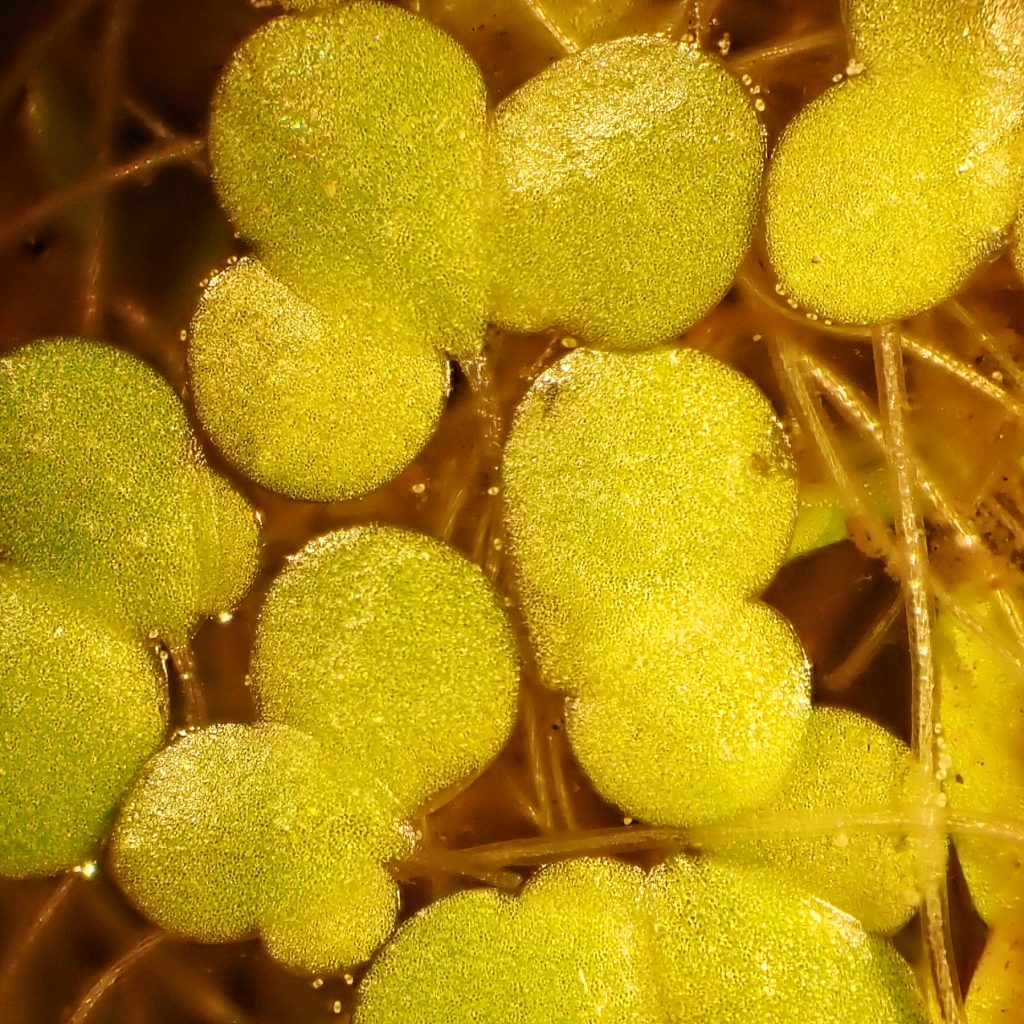
Description-Perennial; free floating aquatic plant without stems or leaves, instead with flat, smooth, green (rarely reddish), oval bodies 2-7mm long that have 3-5 veins (probably only visible with optics and backlight); roots up to 6” long; lacks turions.
Similar species–L. trisulca has submerged bodies except when flowering, and forms branching networks; L. minuta, L. valdiviana have only one vein; L. gibba has a midline ridge; L. turionifera has 3-7 papillae on a broad midline ridge, and often has turions.
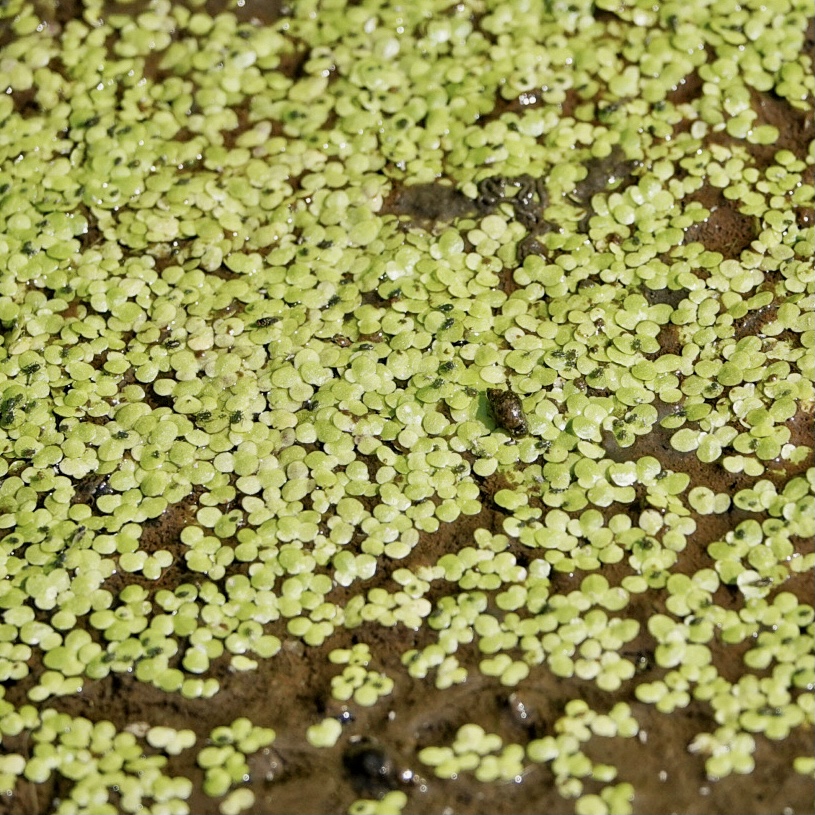
Habitat-Still or very slow moving freshwater, usually with a heavy nutrient load, up to 4800’ elevation.
Range– Native to the temperate Northern Hemisphere, but now cosmopolitan; region wide in appropriate habitat.
Reproductive timing-Rarely has flowers, but those that do occur can bloom from June to October; reproduction is usually by budding, with the buds forming in lateral pouches; the daughter plant is connected by a thin stipe that decays when the plant is mature.
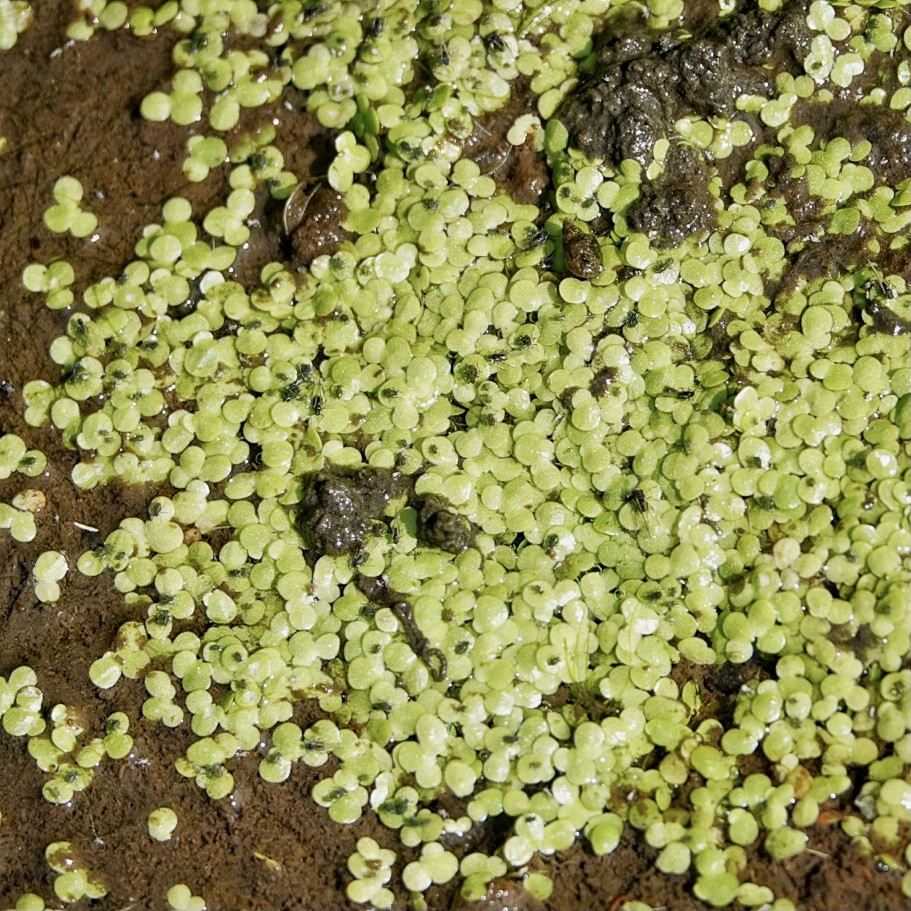
Eaten by-Waterfowl, sora , turtles, muskrats, carp, bullheads, and some sunfish, amongst other vertebrates, eat the foliage, as well as invertebrates in the genera Scirtes (marsh beetle), Tanysphyrus (marsh weevils), Hydrellia (shore flies), and the moth Elophila obliteralis (waterlily leafcutter moth).
Etymology of names–Lemna is from the Greek word for ‘a water plant’. The specific epithet minor is Latin for ‘subordinate’, and my guess is that this was the lesser duckweed to greater duckweed (Spirodela polyrhiza).
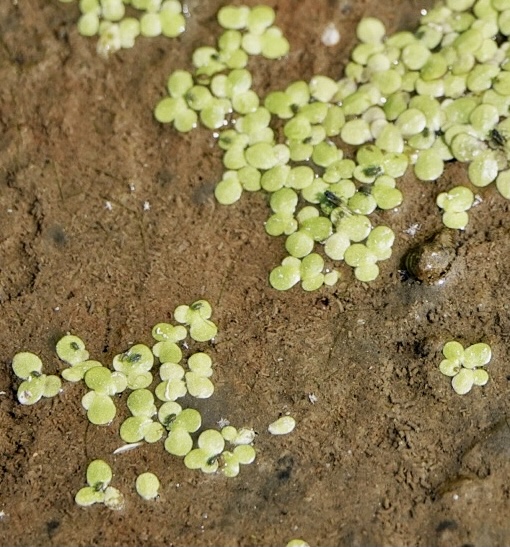
https://www.frontiersin.org/articles/10.3389/fchem.2018.00479/full
https://www.illinoiswildflowers.info/wetland/plants/cm_duckweed.htm
https://sciencing.com/animals-eat-duckweed-6562267.html
http://biology.burke.washington.edu/herbarium/imagecollection/taxon.php?Taxon=Lemna%20minor
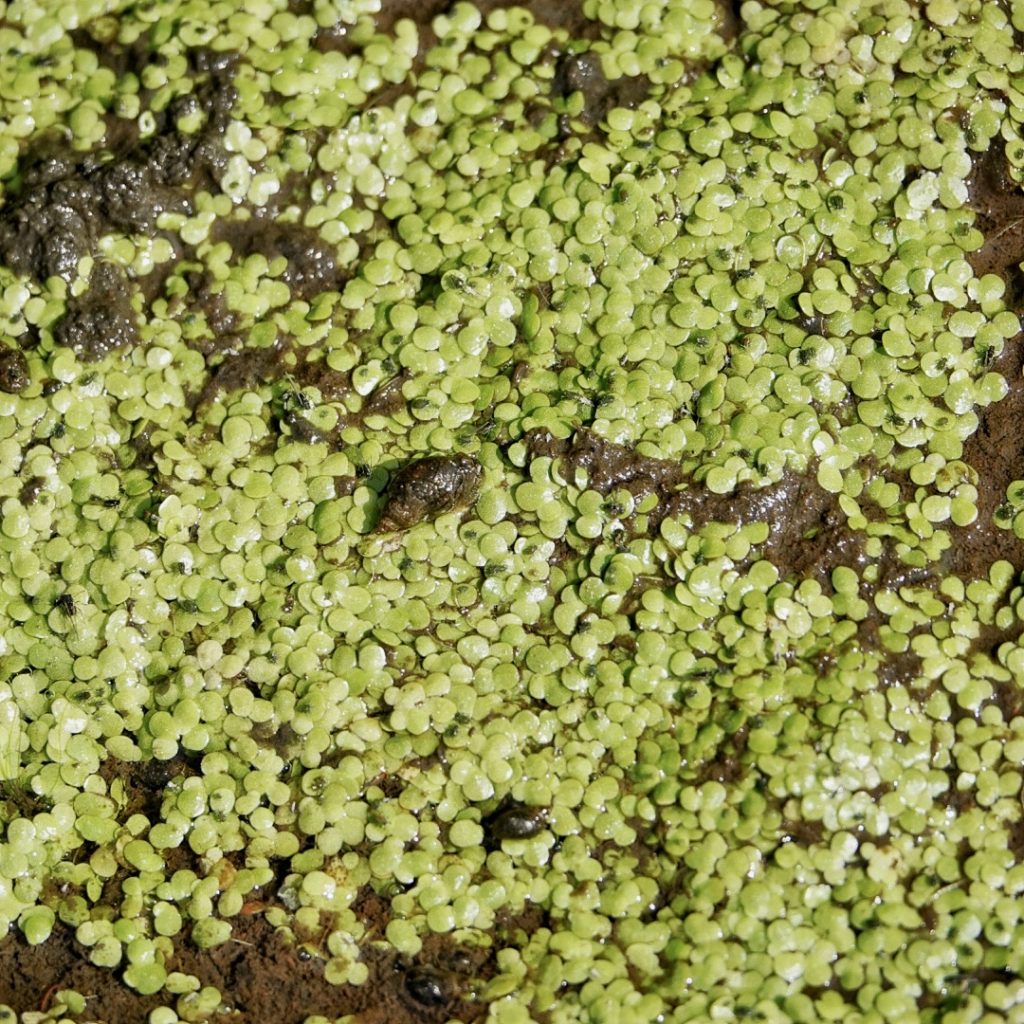
1 thought on “Lemna minor (Common Duckweed)”